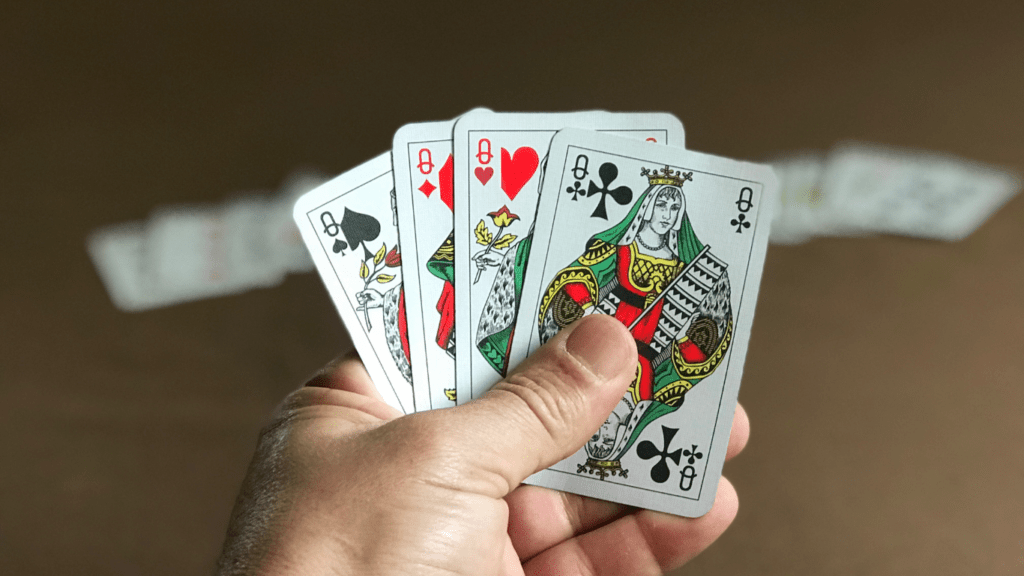Poker isn’t just a game of luck; it’s a battle of wits where strategy reigns supreme. I’ve spent countless hours studying the tactics that separate amateurs from the pros, and I’ve discovered that mastering a few key strategies can elevate your game significantly.
Whether you’re playing at a local casino or online, understanding these techniques can give you the edge you need to outsmart your opponents.
Overview of Poker Strategies
Poker strategies involve techniques that enhance a player’s ability to win. Mastering these techniques requires understanding both the game dynamics and the psychology of opponents. Here are five key strategies I focus on:
- Tight-Aggressive Play: Tight-aggressive play emphasizes playing fewer hands but playing them aggressively. I apply this approach to put pressure on opponents, forcing mistakes and maximizing profits.
- Bluffing: Bluffing plays a critical role in poker, adding unpredictability to my game. I identify moments when my opponent has a weak hand, then bet or raise to convince them to fold. Effective bluffing relies on my ability to read opponents accurately.
- Position Awareness: Position impacts decision-making significantly. I prioritize playing stronger hands from late positions, gaining valuable information about opponents’ actions before making my own moves.
- Pot Odds and Expected Value: Understanding pot odds helps me assess the profitability of calls. I calculate the ratio of the current pot size to the amount I need to call, guiding my decisions based on expected value.
- Reading Opponents: Observing opponents’ behaviors enhances my decision-making. I study betting patterns, body language, and timing to glean insights into their hand strength, adjusting my strategy accordingly.
These strategies form the cornerstone of professional poker. They promote strategic thinking and adaptability, essential for success in both casual and competitive environments.
Strategy 1: Tight-Aggressive Play
Tight-aggressive play combines selective hand selection with assertive betting. This strategy maximizes potential winnings while minimizing losses, proving effective in various formats of poker.
Understanding the Concept
Tight-aggressive play focuses on playing a limited range of strong hands while applying pressure through aggressive tactics. Players adopting this approach choose to enter fewer pots, ensuring they play only premium hands.
Once in a hand, I bet or raise aggressively to build the pot and force opponents into difficult decisions. This method not only increases the average pot size but also forces weaker hands to fold, leading to more profitable outcomes.
Benefits and Drawbacks
Benefits:
- Increased Profitability: Taking control of the hand through aggressive betting often leads to higher expected value.
- Decreased Risk: Playing fewer hands reduces the chances of encountering unfavorable situations.
- Effective Psychological Pressure: Opponents may feel intimidated, leading them to make mistakes or fold strong hands.
- Predictability: If opponents catch on to my tight-aggressive style, they may adjust their own strategies to counter it.
- Potentially Missed Opportunities: Overly selective hand play might skip profitable situations and hands.
- Challenging for Beginners: Mastering the nuances of aggression and timing can require significant experience and skill.
Strategy 2: Bluffing Effectively
Bluffing adds a layer of strategy and unpredictability in poker. It’s a powerful tool that can extract folds from opponents and increase potential winnings.
When to Bluff
I identify key moments to bluff. Bluffing becomes effective in specific situations, such as when the board presents favorable conditions. For instance, if the community cards suggest a strong hand, like a flush or straight, opponents are more likely to fold weaker holdings.
Bluffing also works best against tight players who tend to fold easily when faced with aggression. Additionally, I consider the table dynamics; if I’ve established a tight image, opponents are more inclined to believe my bets or raises.
Timing becomes crucial, so I focus on the flow of the game and my own betting patterns to create opportunities for successful bluffs.
Recognizing Opponents’ Tells
I pay close attention to opponents’ tells for successful bluffing. Tells can manifest through body language, facial expressions, and betting patterns. For example, if an opponent suddenly becomes more talkative, it might indicate anxiety over their hand.
A hesitant call can suggest weakness. I also look for inconsistencies; if a player often bets aggressively but suddenly plays passively, they might be uncertain. Understanding these signals helps me gauge the best moments to apply pressure and attempt a bluff, maximizing my chances of success.
Strategy 3: Position Play
Position play significantly influences my decision-making in poker. Understanding where I sit at the table affects not only my hand selection but also my betting behavior and how I interpret opponents’ actions.
Importance of Table Position
Table position determines how much information I gather before acting. In early positions, I face uncertainty as opponents have the opportunity to respond to my choices. It’s vital to play tighter in these spots.
Conversely, in late positions, I gain insight into opponents’ actions, allowing for a broader hand selection and more aggressive play. By leveraging position, I can make informed decisions that increase my winning potential.
Adjusting Strategy Based on Position
Adjusting strategy according to my position enhances my effectiveness.
- Early Position: I select strong starting hands and play conservatively. This minimizes risk as opponents act after me.
- Middle Position: My range of playable hands widens, allowing for some speculative hands, especially if favorable conditions arise, such as a tight table.
- Late Position: I exploit my advantage by being more aggressive. I can steal blinds and take calculated risks based on previous actions.
By adapting my strategy according to position, I increase the likelihood of securing wins and maximizing profits.
Strategy 4: Bankroll Management
Managing my bankroll effectively is crucial for long-term success in poker. By implementing disciplined strategies, I can sustain play and avoid unnecessary losses.
Setting a Bankroll Limit
Setting a specific bankroll limit prevents me from overspending and keeps my gameplay sustainable. I typically allocate a percentage of my total funds dedicated solely to poker. As a rule, I don’t invest more than 5% of my bankroll in any single session.
This precaution allows me to endure downswings without depleting my funds quickly. Regularly reviewing and adjusting my bankroll limit based on my win/loss ratio provides valuable insights into my performance and helps maintain financial health.
Strategies for Protecting Your Bankroll
Protecting my bankroll involves several key strategies:
- Establishing a Stakes Range: I choose stakes that align with my bankroll size. Playing within limits ensures I can absorb variance and reduces the risk of going broke.
- Avoiding Tilt: I develop techniques to manage emotions during gameplay. By recognizing signs of tilt, I can step away or take breaks to regain composure, preventing emotional decisions that threaten my bankroll.
- Selective Game Choice: I prioritize games where I have an edge. Analyzing opponents and game dynamics helps me select tables where my skills can translate into profits, thereby preserving my bankroll.
- Utilizing Bonuses: I take advantage of promotions or bonuses offered by online platforms. These can enhance my bankroll, allowing for extended play while minimizing risk.
- Tracking Results: Regularly monitoring my wins, losses, and overall bankroll trend provides essential data. By evaluating performance, I can identify patterns and adjust my strategy as needed, ensuring ongoing bankroll protection.
Strategy 5: Reading Opponents
Reading opponents involves observing behaviors like betting patterns and body language. By understanding these cues, I can adjust my strategies based on their perceived hand strength.
Identifying Player Types
I categorize opponents into distinct player types to enhance my game strategy. Common types include:
- Tight Players: They play fewer hands and only enter pots with strong cards. By recognizing their cautious approach, I can exploit situations when they seem hesitant to commit chips.
- Loose Players: These players participate in many hands, often with weaker cards. I take advantage of their lack of discipline by applying pressure, especially with stronger hands.
- Aggressive Players: They frequently bet and raise, making it hard to pin down their hand strength. Against them, I remain observant and ready to counter with strategic bluffs or solid hands.
- Passive Players: They tend to call rather than raise. I exploit this by betting aggressively with strong hands, knowing they’re less likely to contest.
- Maniacs: These players are overly aggressive, often risking all their chips on marginal hands. I capitalize on their reckless behavior with more conservative play, waiting for premium hands to maximize profits.
Adjusting Your Strategy Accordingly
I adapt my strategy based on the types of opponents at the table. If I identify a tight player, I increase my bluffing frequency to exploit their tendency to fold. Against loose players, I tighten my range, ensuring I enter pots with strong hands.
When facing aggressive players, I become more defensive, allowing them to bet into me, which sets the stage for trap plays. For passive players, I lead the betting with my solid holdings, ensuring I extract maximum value.
Against maniacs, I let them inflate the pot and focus on keeping my cool, readying my strong hands for when they overcommit. By reading the players accurately and adjusting my strategy, I enhance my chances of success at the poker table.





